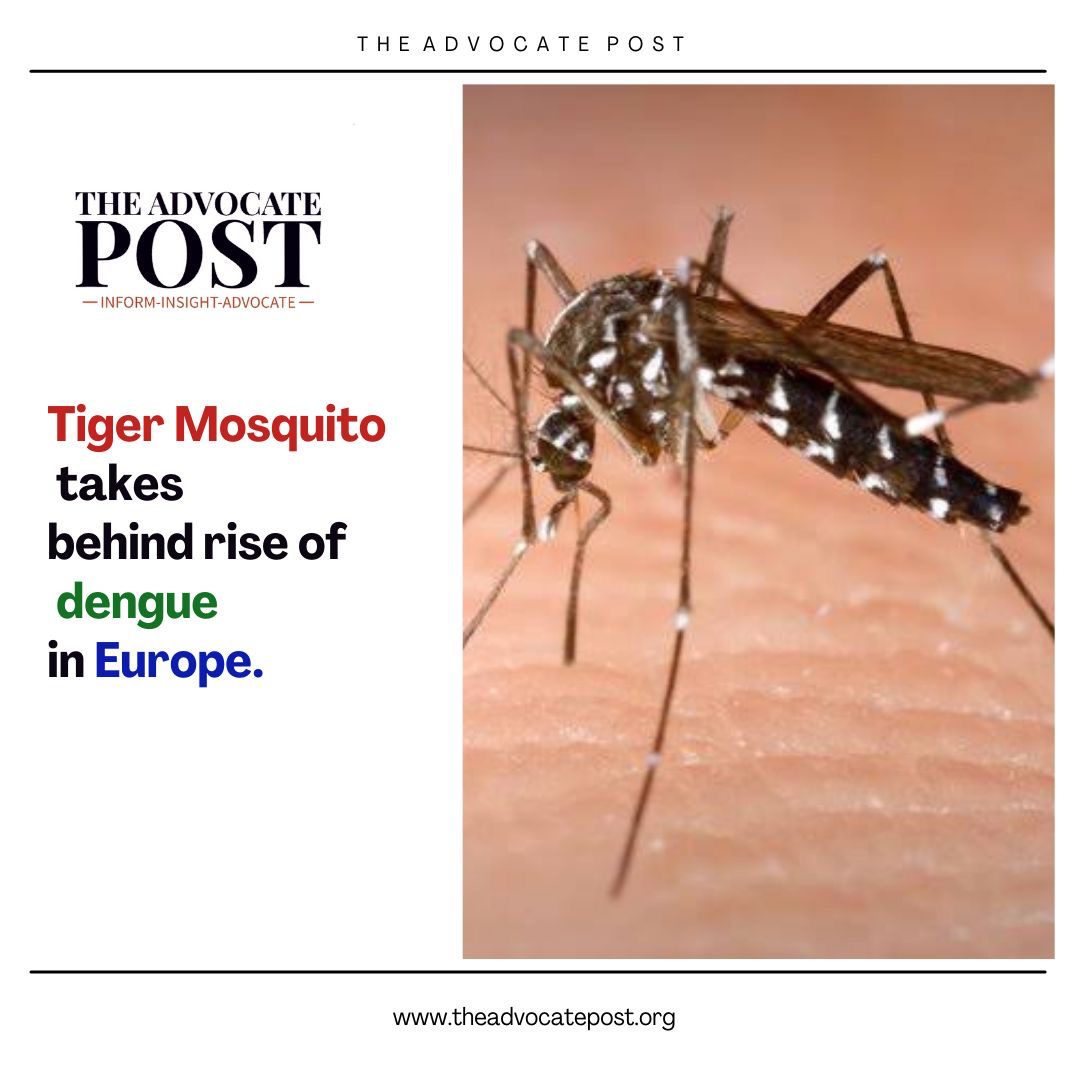News DeskAn invasive species of mosquito has been found in 13 countries in the EU, including France, Spain and Greece, with experts linking their discovery to a rise in dengue fever in Europe. According to the ECDC friendly circumstances are being created by climate change for the tiger mosquito.
The next Olympic Games are taking place in Paris at the peak of July, therefore government officials have been observing and keeping the insect as far north as that.
People have been urged to use insecticide, hang mosquito nets at night, and clear standing water from gardens and terraces where mosquitoes can breed.
From its ‘base camp’ in southern Europe, the Asian tiger mosquito, Aedes albopictus, is currently making its way across Europe and is considered to be the most prevalent species of mosquito worldwide.
According to the ECDC, it is now well-established in Austria, Bulgaria, Croatia, France, Germany, Greece, Hungary, Italy, Malta, Portugal, Romania, Slovenia, and Spain.
Additionally, reports of it have come from Slovakia, the Netherlands, Belgium, Cyprus, and Czechia.
Diseases like dengue fever, chikungunya, and the Zika virus, which were formerly limited to certain regions of Africa, Asia, and the Americas, are dispersed by tiger mosquitoes.
Beginning with flu-like symptoms, dengue can progress to more serious and occasionally fatal complications.
The number of mass epidemics has increased recently. Eight cases of multiple infections were reported in France, four in Italy, and two in Spain in the previous year.
As a result of global trade and population mobility, the majority of cases in Europe are imported; the number of imported cases increased to around 5,000 last year.
However, there is also an increase in locally acquired infections: in 2023, 130 persons were afflicted, compared to 71 in the previous year.
The West Nile virus, which is also spread by mosquitoes, is more common than ever in many parts of Europe.
According to the ECDC, one case of the virus was discovered in southern Spain in the beginning of March, demonstrating how the climate is fostering an environment that mosquitoes can thrive in even “very early in the year.”





